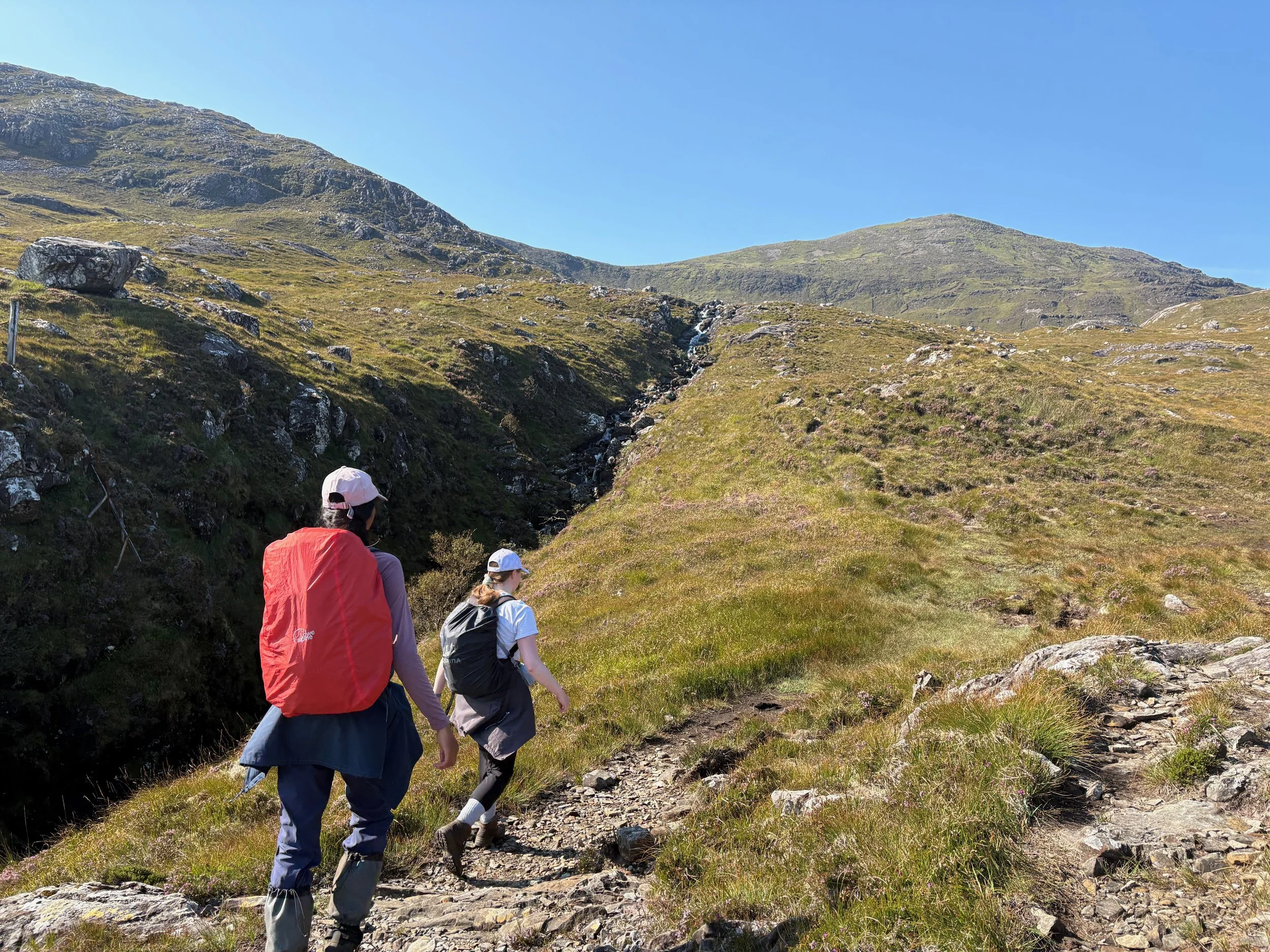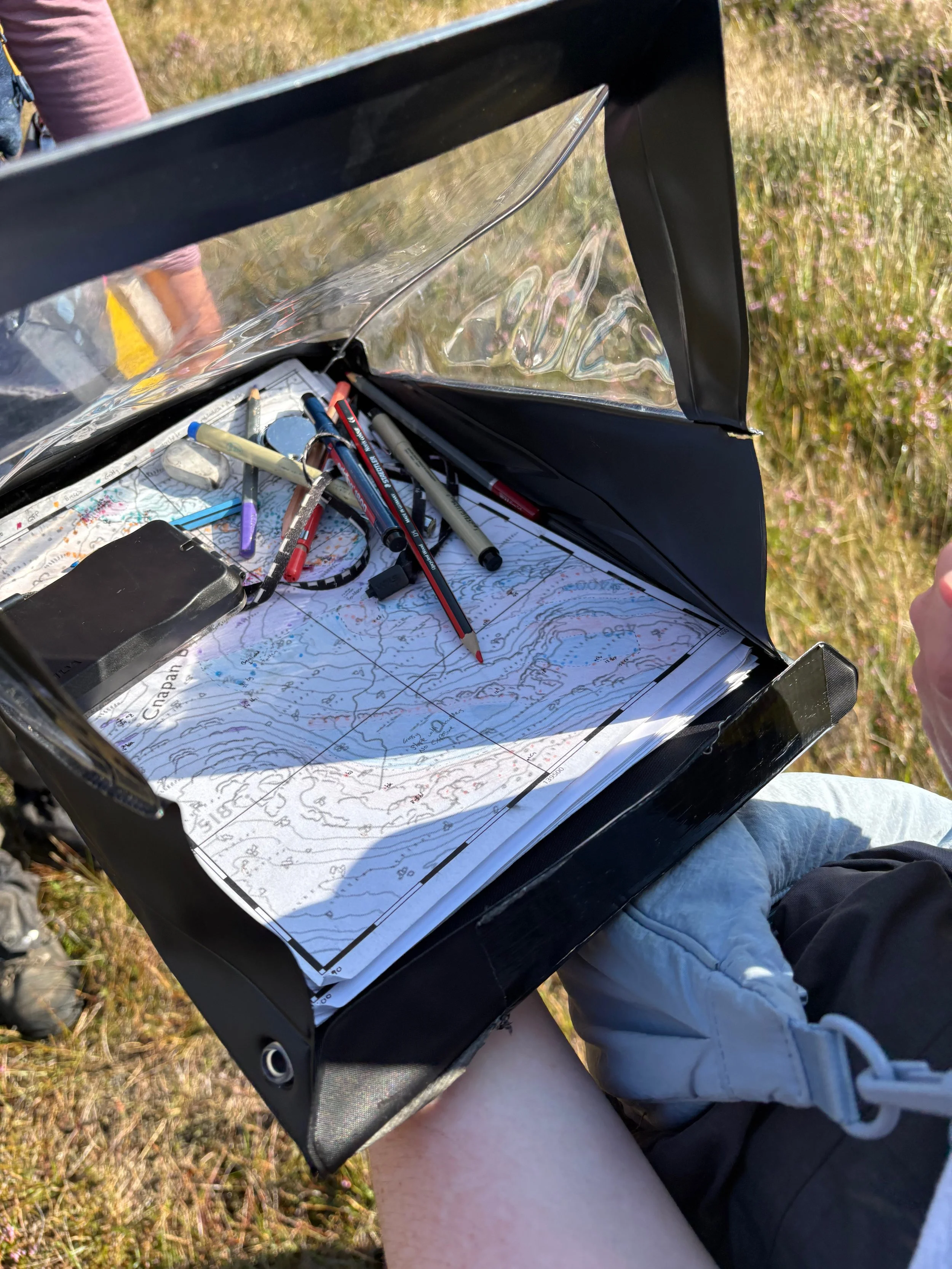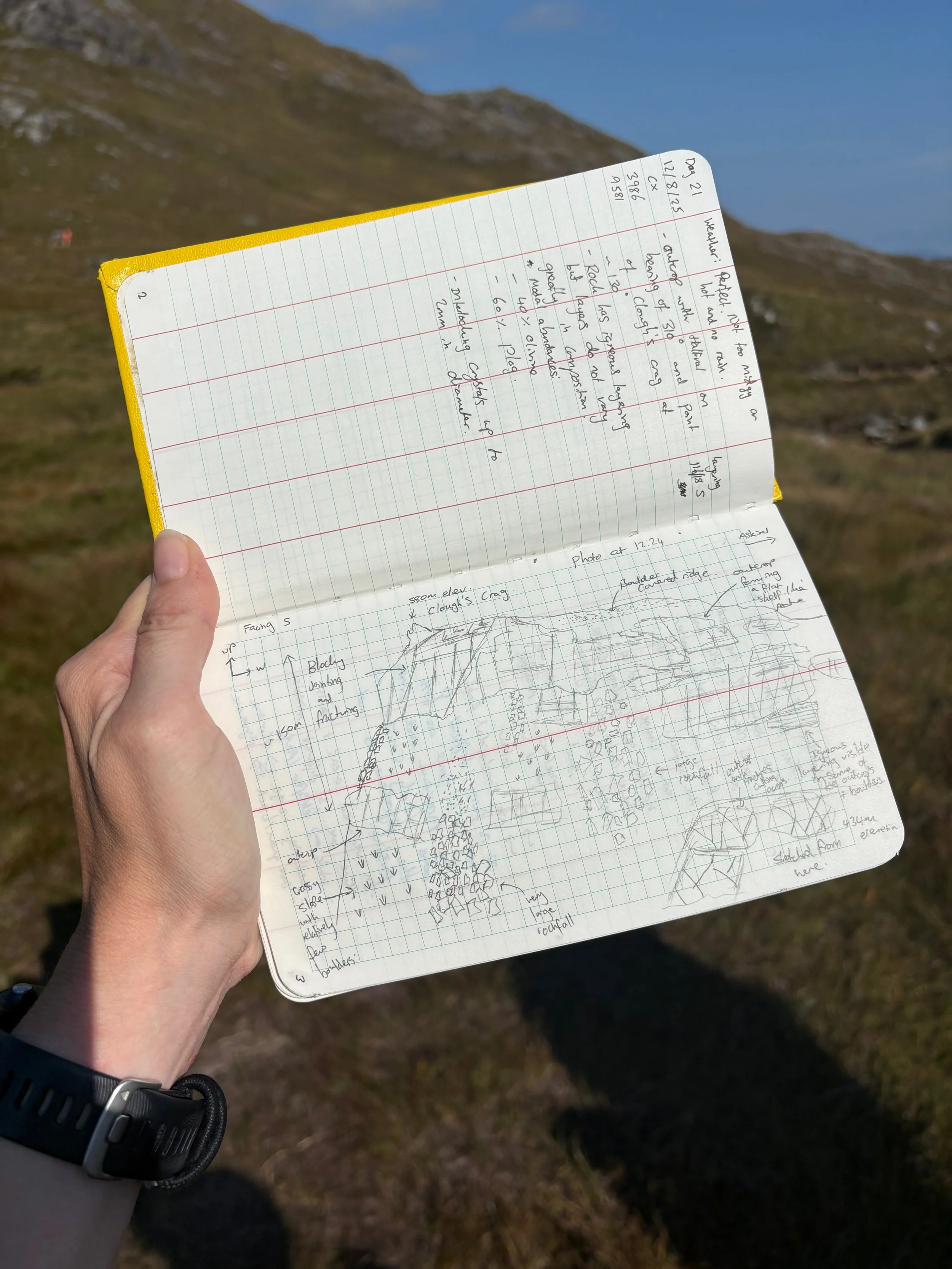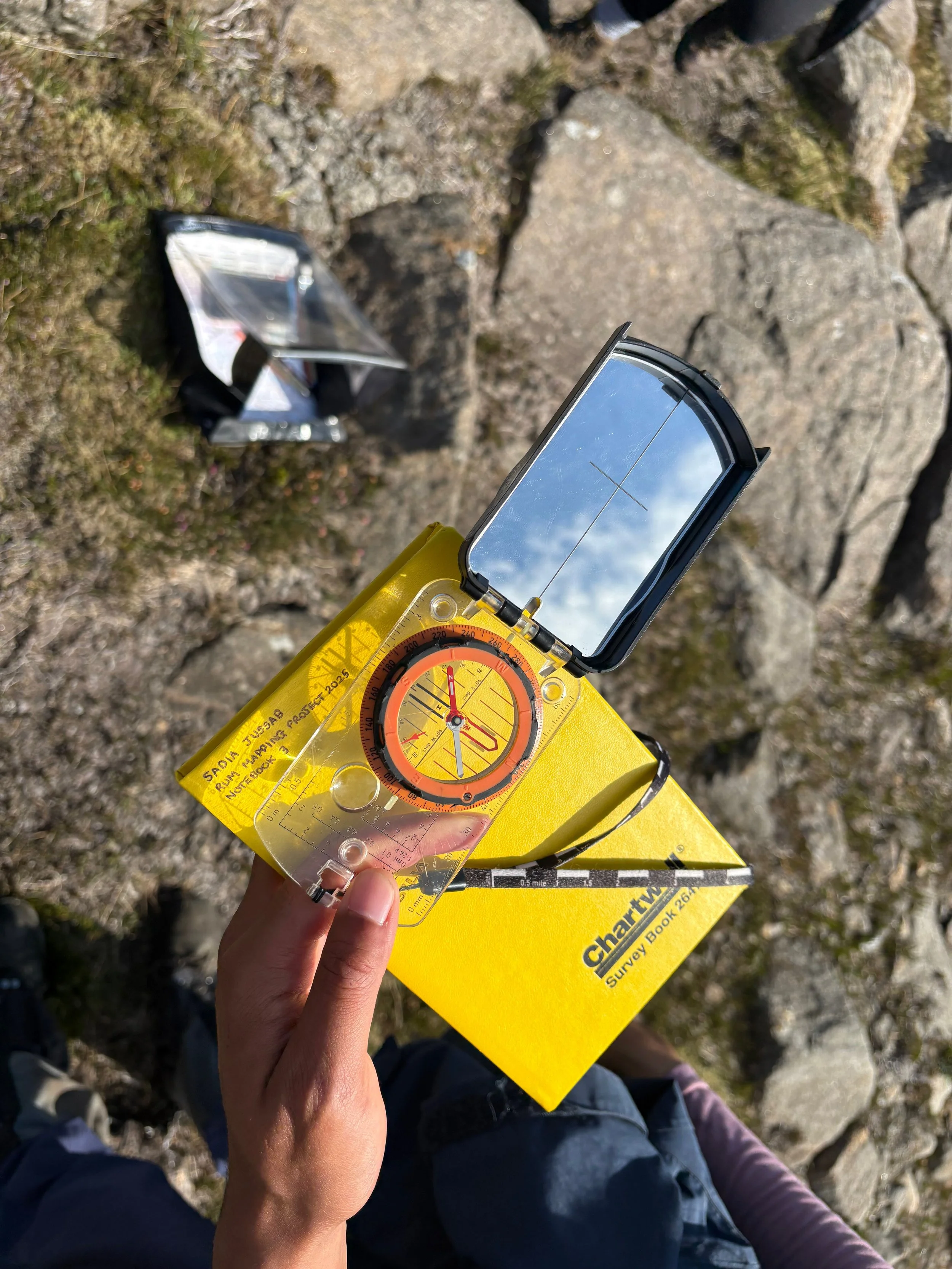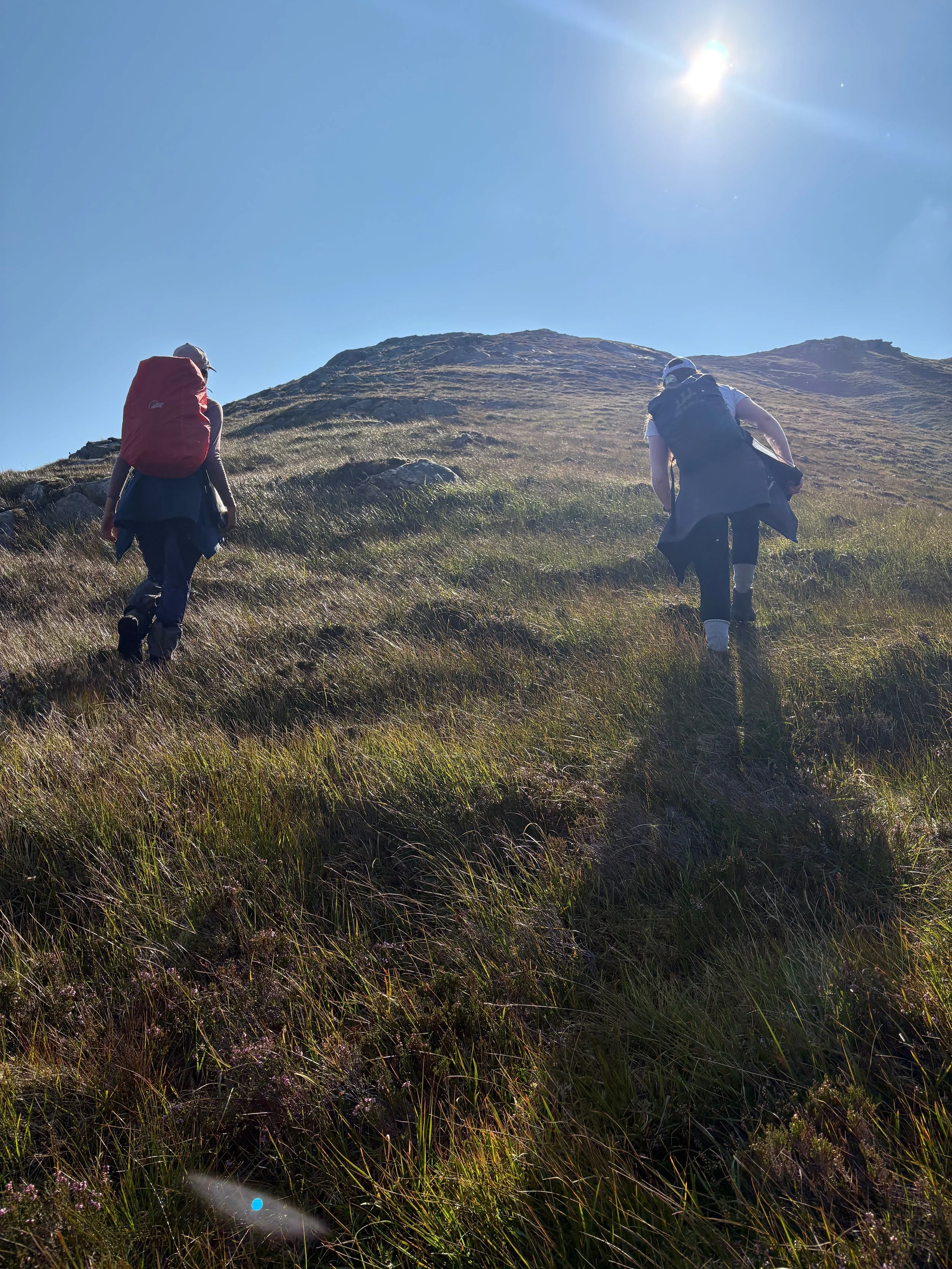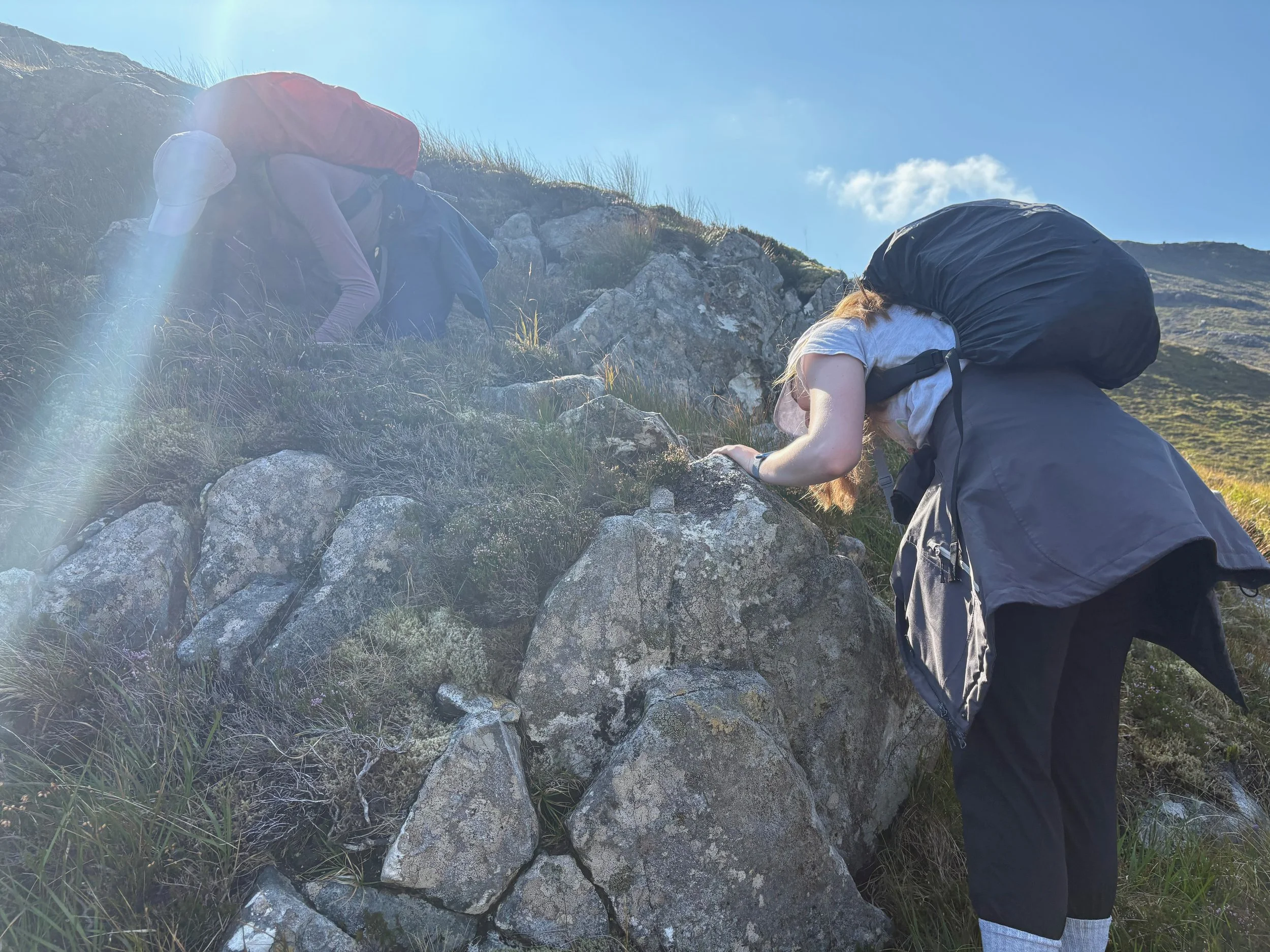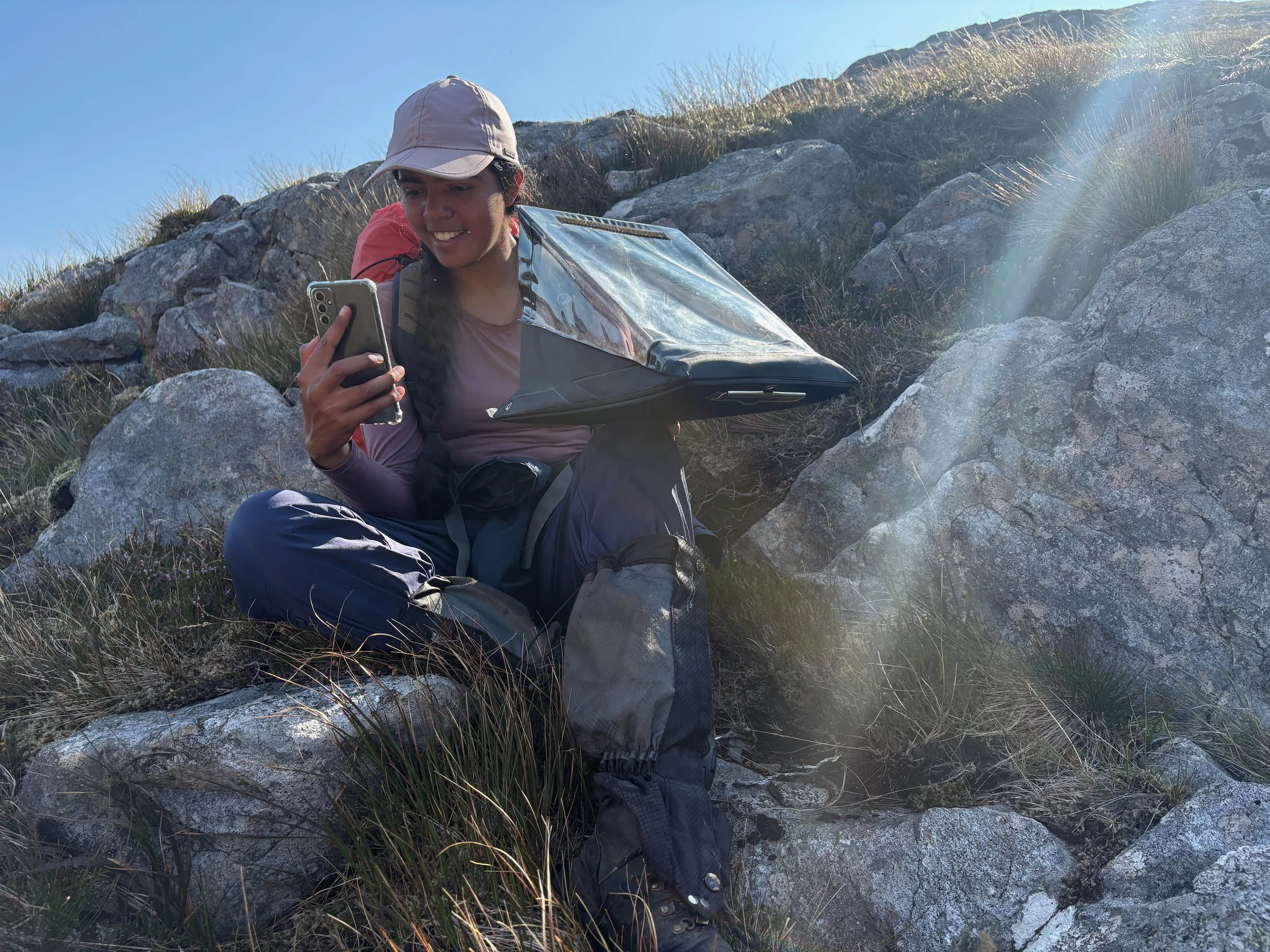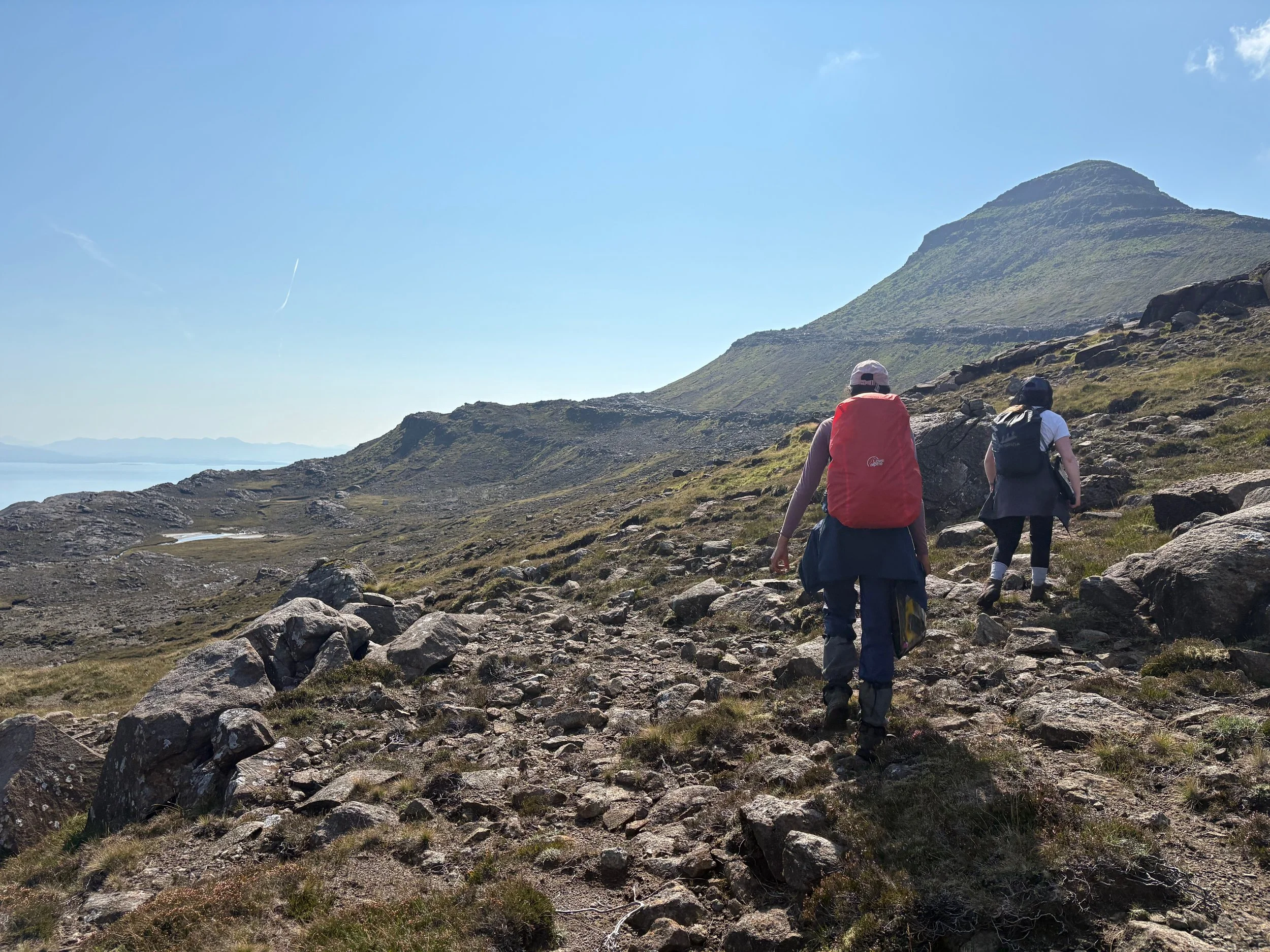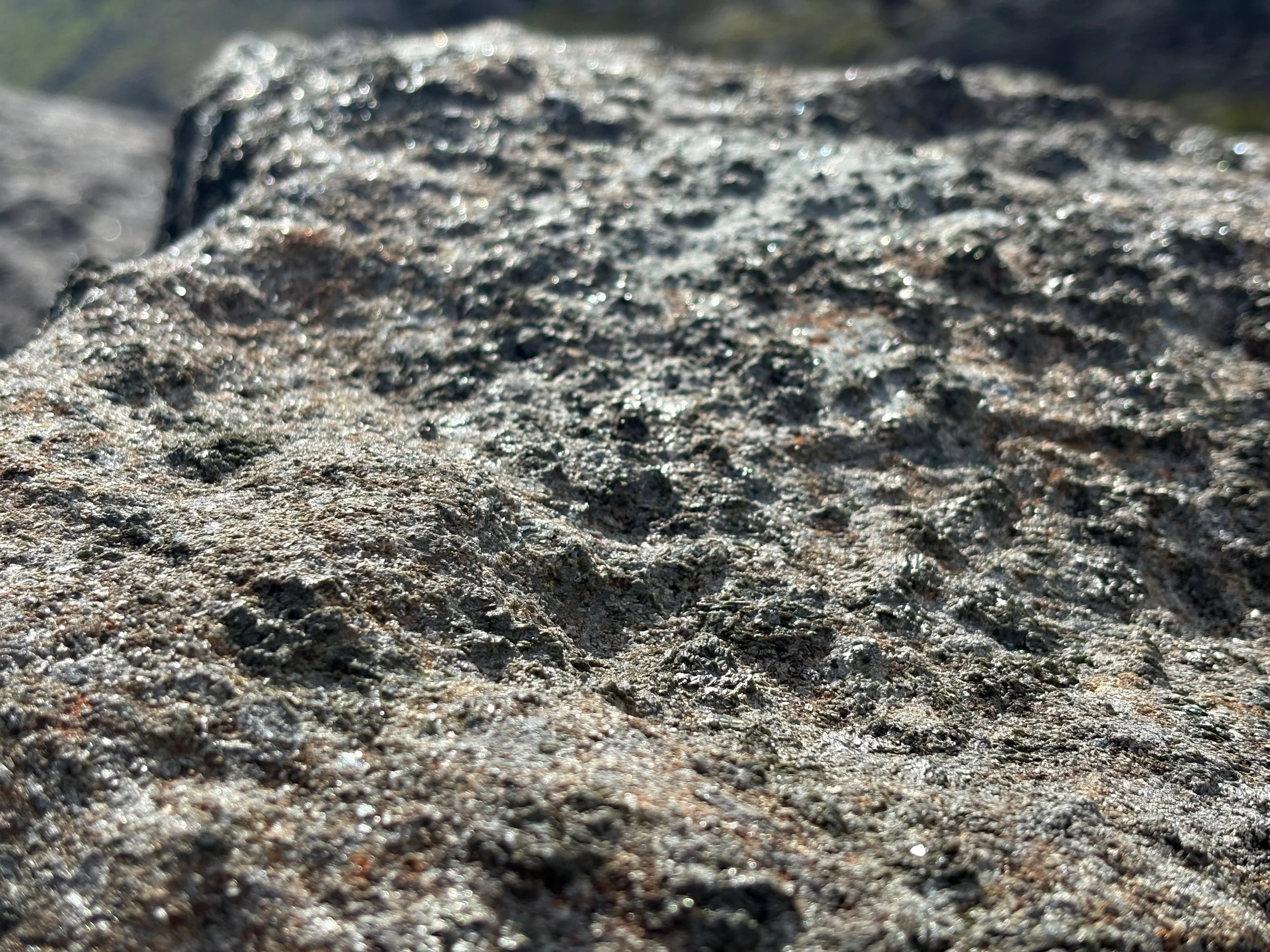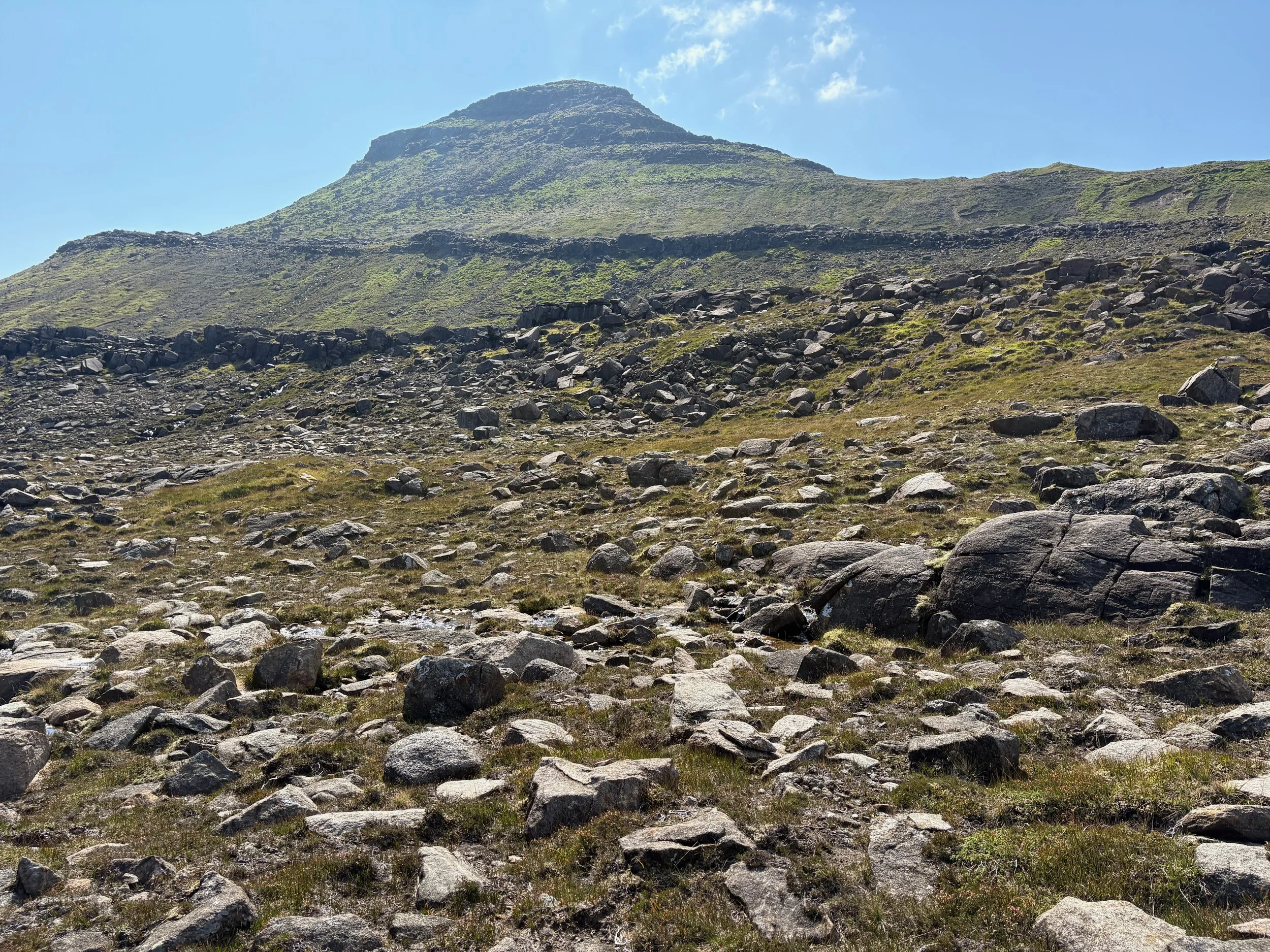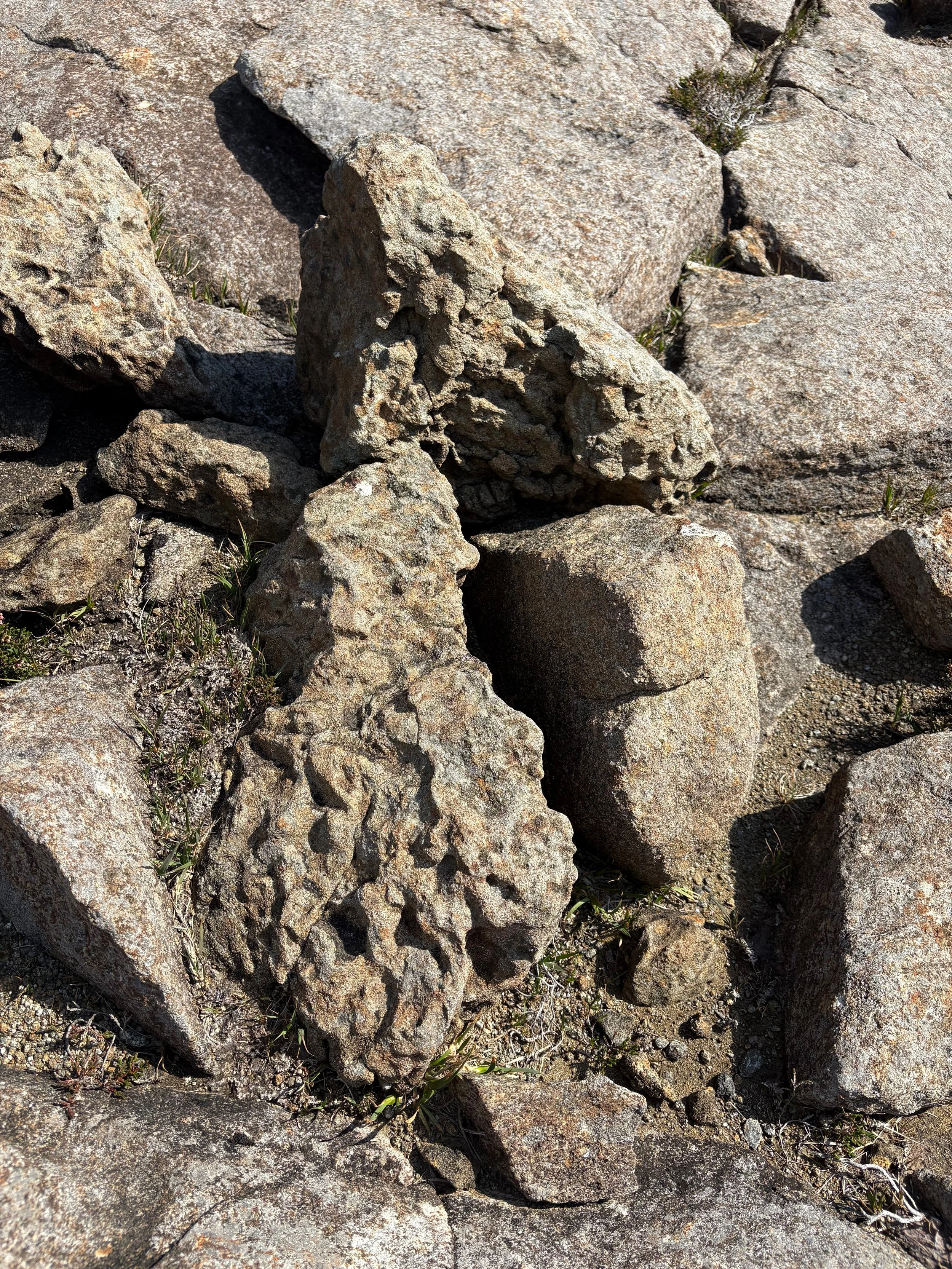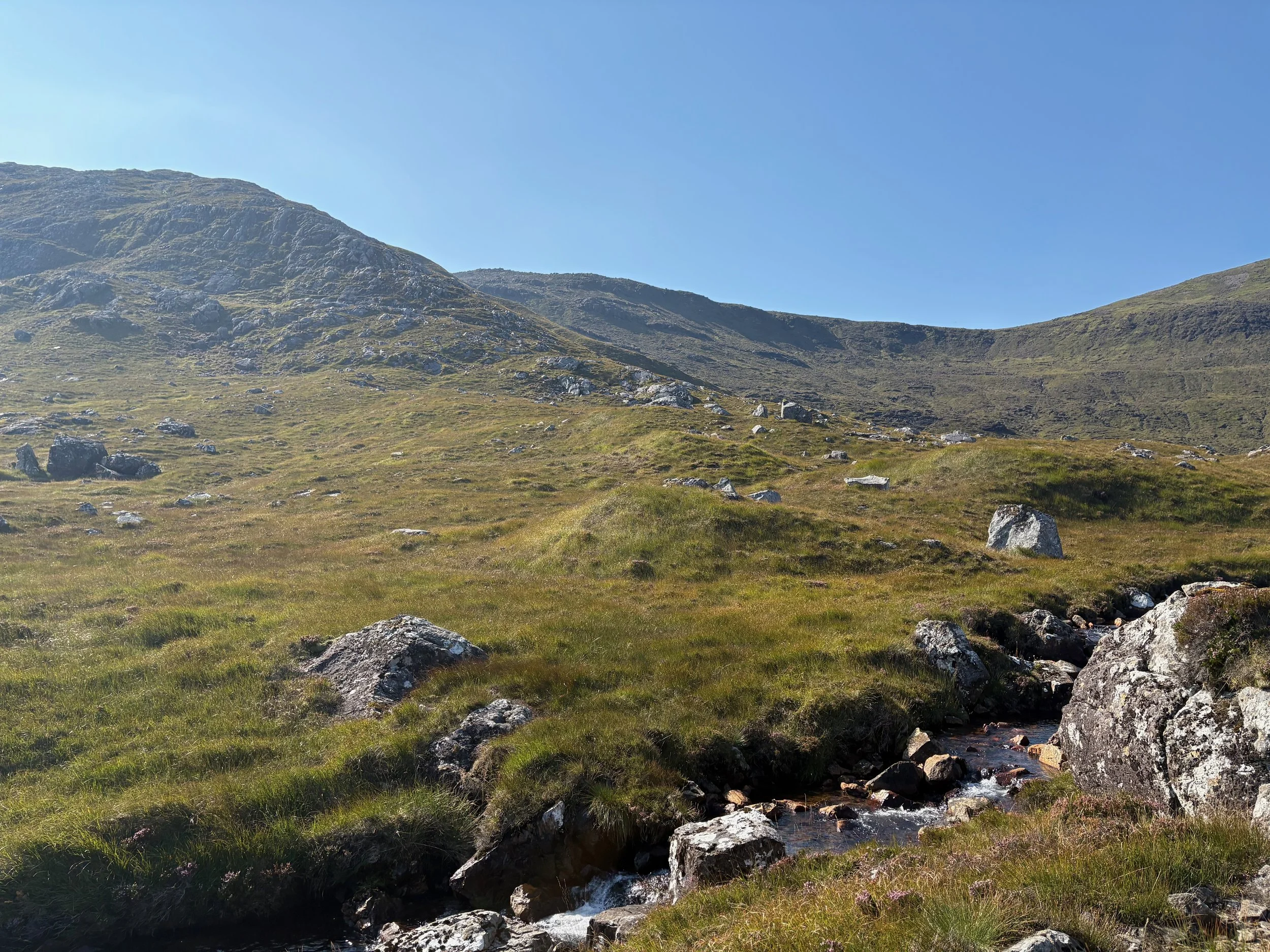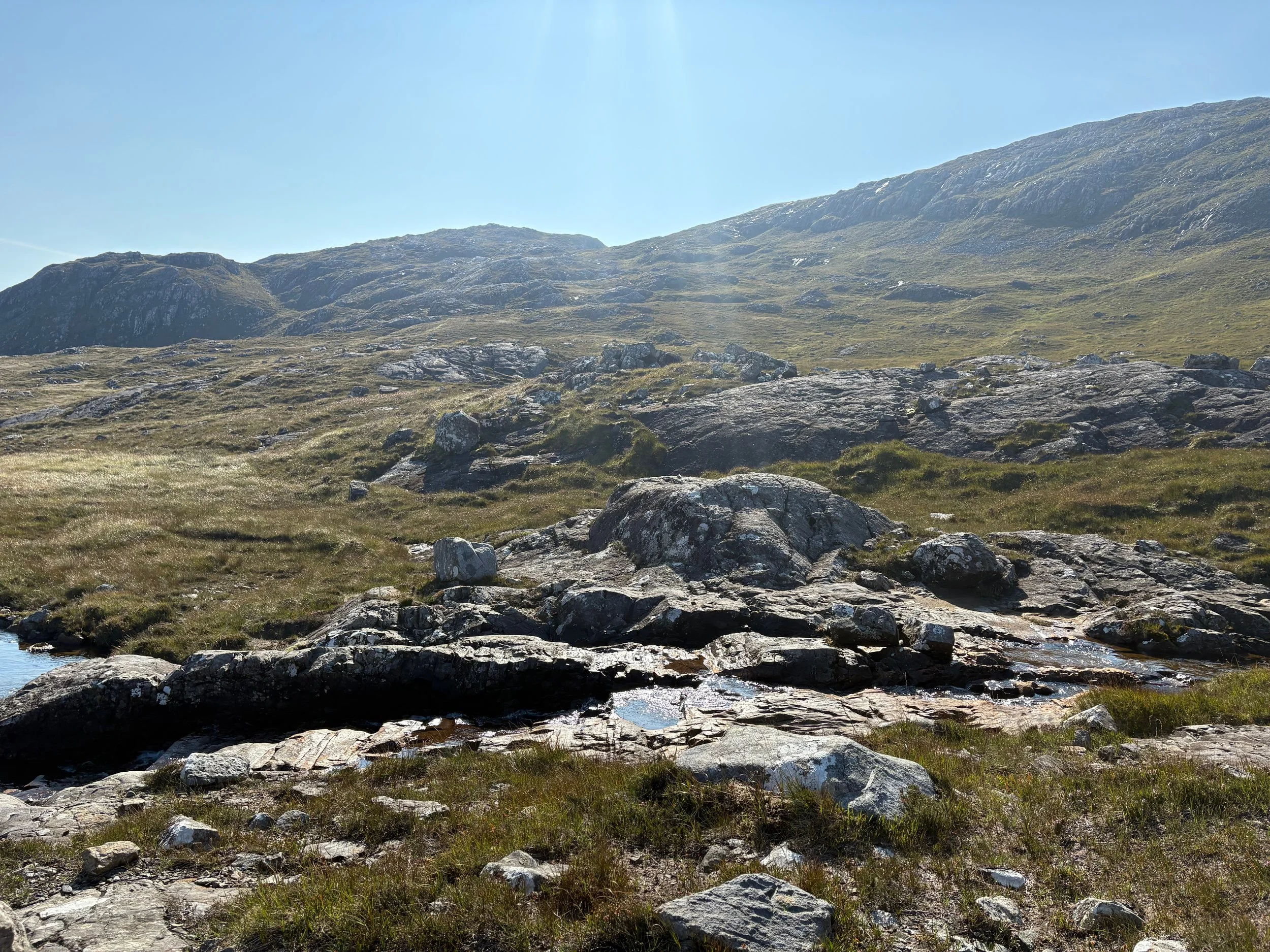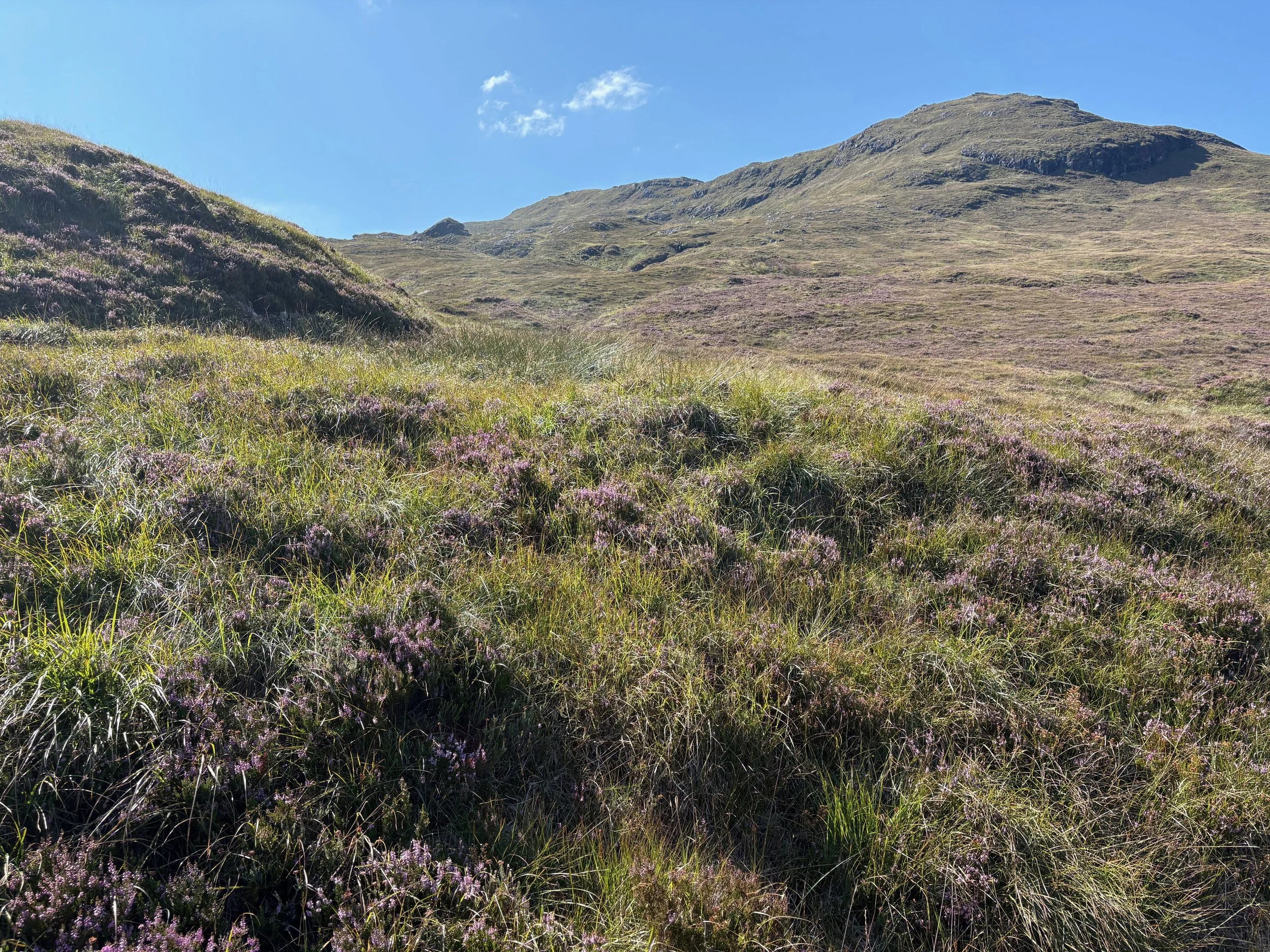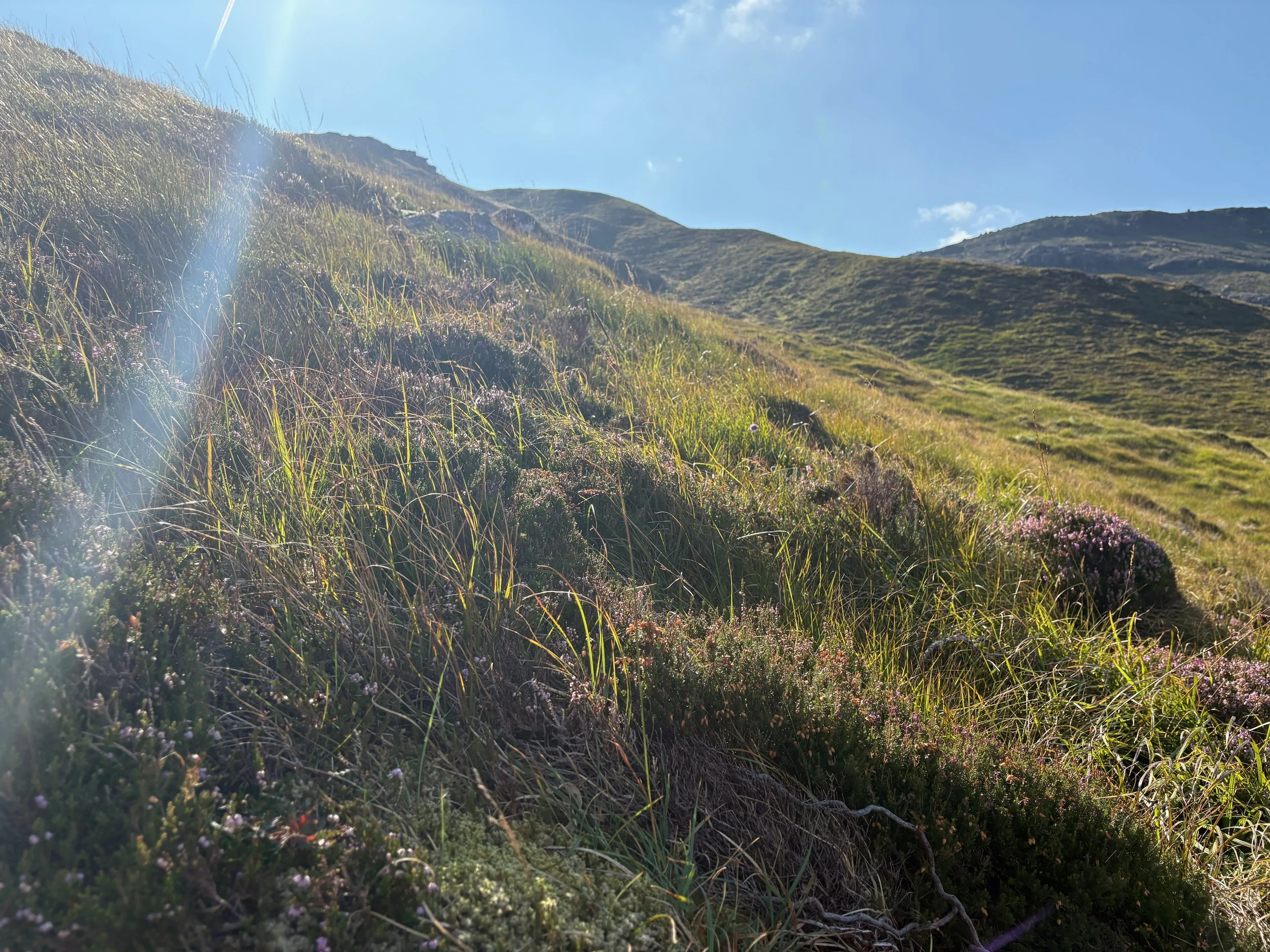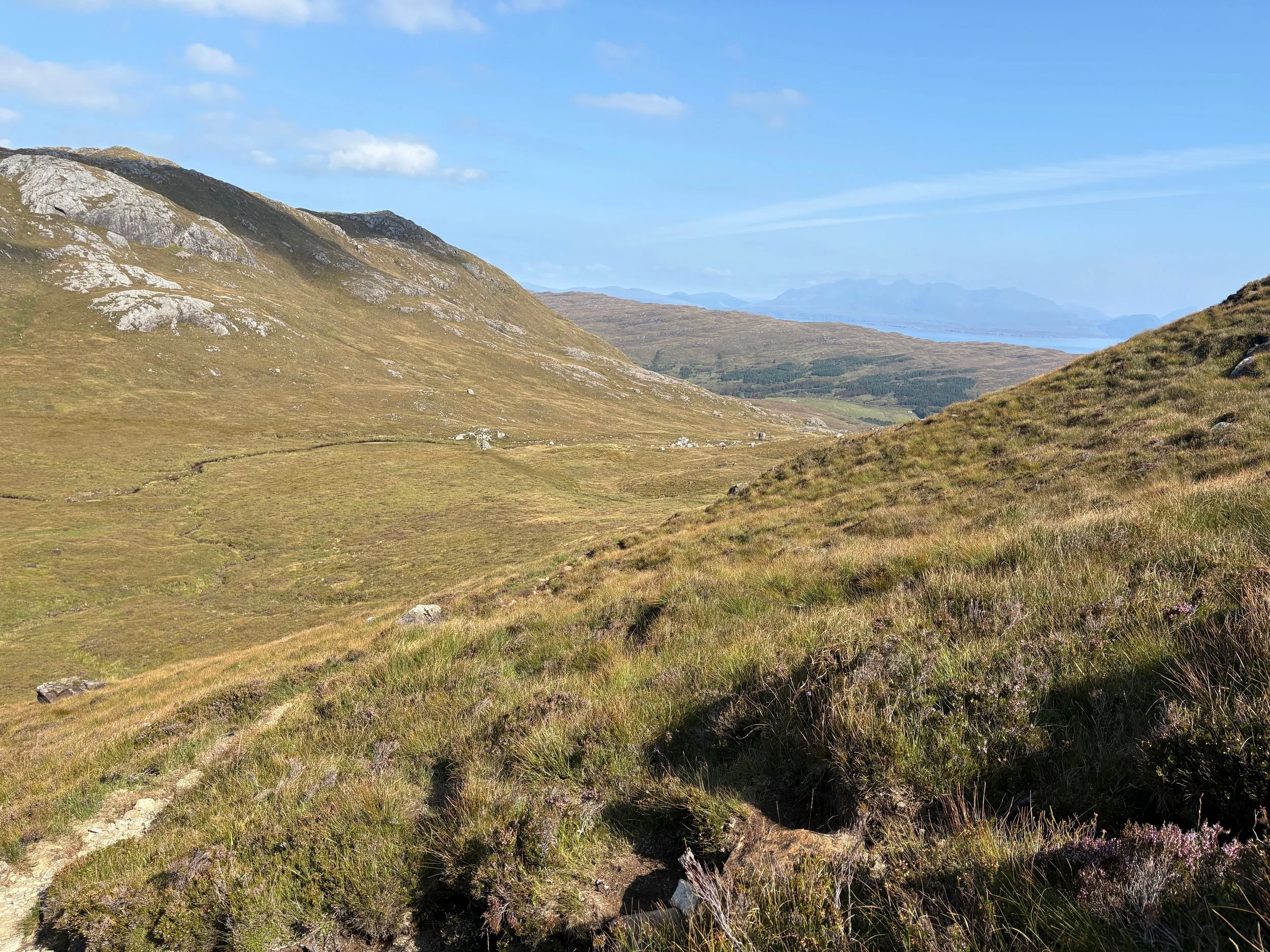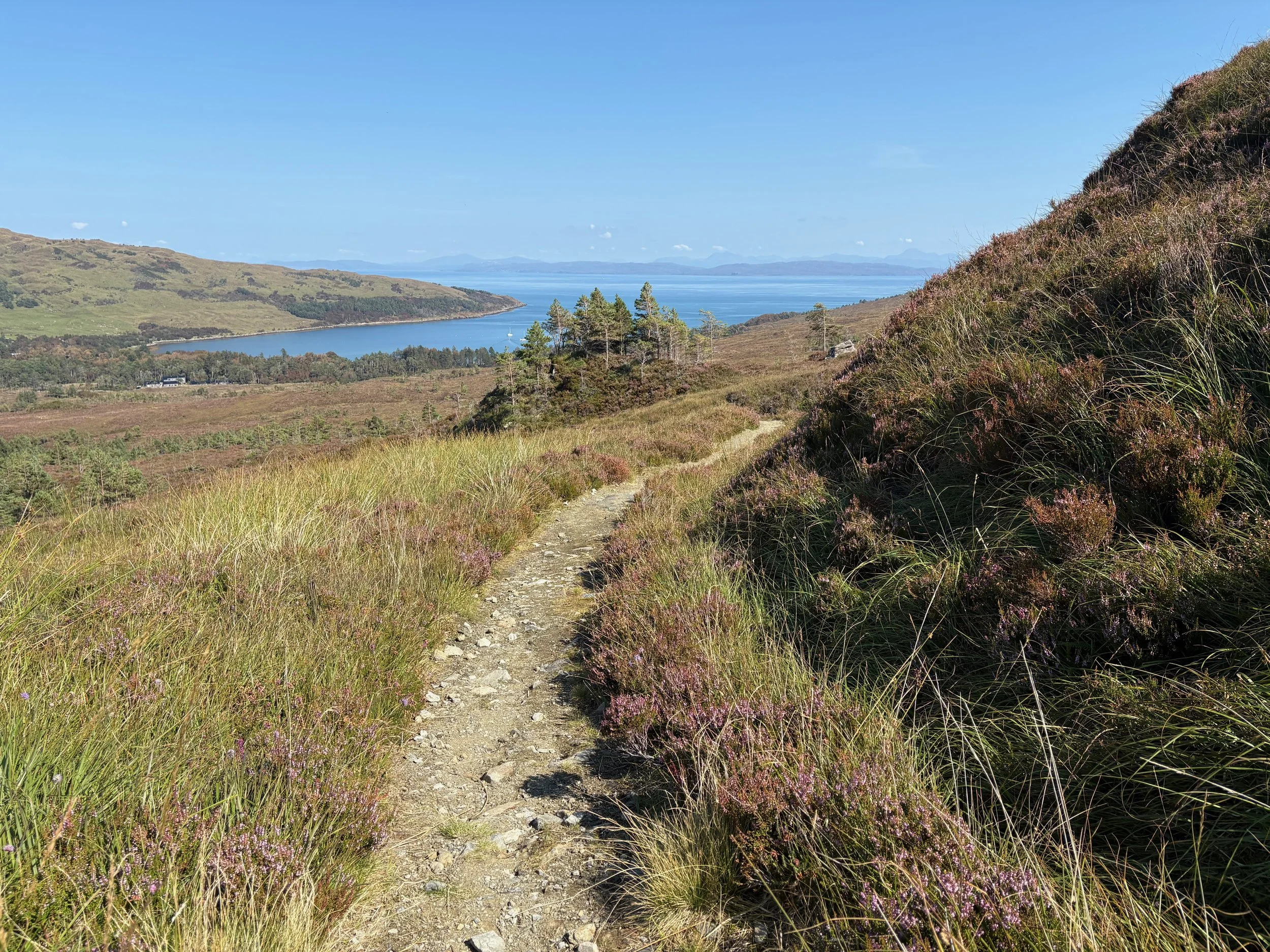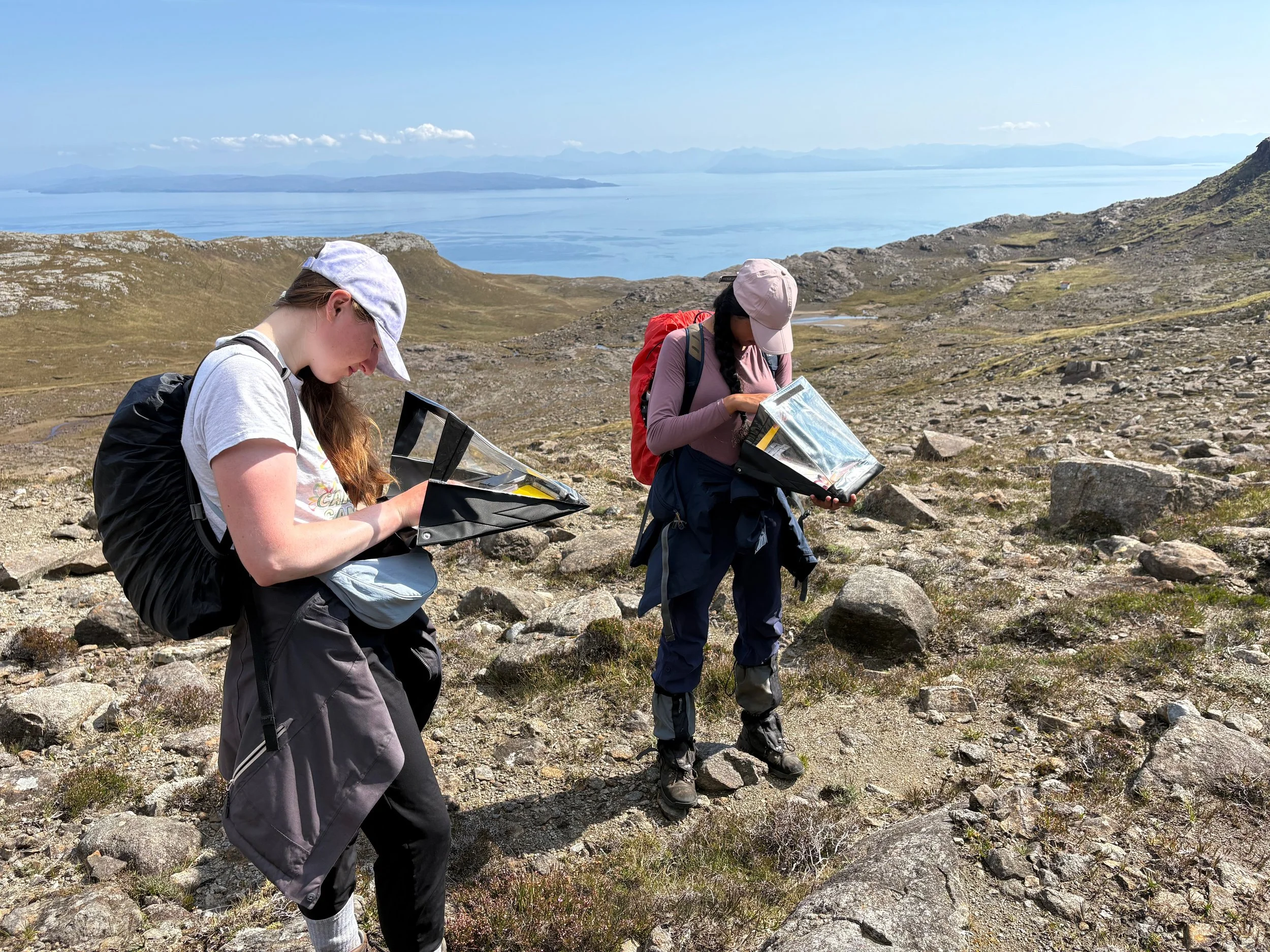Rocks
Staying at the Rum Bunkhouse meant getting to chat with lots of interesting people. Most were visiting for only a few days, but a group of four undergrad geology students from Cambridge were staying for five weeks(!) doing a mapping project.
They had been such fun to talk with and have SUCH deep knowledge of their field; it was fascinating to hear about how wild the geology is on Rum (and how most maps of its geological features disagree!). On Sunday, they were kind enough to let me tag along on their day to see their mapping in action.
We started off by hiking up the Coire Dubh trail — again, short but steep — and then continued up towards Hallival. Some tools of the trade included these pop up clipboard covers (for rain), colored pencils (for marking which rock is where), this cool compass that’s used to show the tilt of rocks, and these killer yellow notebooks.
The work is a lot of stop and go: You have to set up boundaries for where you’re mapping, and then pause to investigate and identify the makeup of the rocks within the area. That meant that a) they didn’t follow paths, often times going straight up hill, b) they had to get REALLY up close and personal with the rocks to look for minute differences, and c) there was lots of time spent marking down locations, using both gps and map coordinates.
I hadn’t spent much time near Hallival either, so it was awesome to get a bit closer look.
Hallival. At 723 meters (2,372 feet) it’s the second highest peak on Rum. We went up to about 418 meters (1,371 feet) during my mapping-shadow day.
Even cooler? The students graciously explained everything as they went. The Rum Cuillin was part of an ancient volcano, so there’s a lot of igneous (magma related) rock like peridotite, troctolite, and gabbro. Most of the rocks we saw on our outing were gabbro.
I don’t think I’ll pass a geology exam any time soon, but I learned some cool facts about such things as mantel plumes, measuring strike and dip (how much rocks tilt and which way), contact metamorphism, and honeycomb weathering.
I headed back around lunch time (they stayed out until after 6pm!) and prepared dinner for them as a thank you — after five weeks of cooking for themselves at the end of long, tiring days in the field, they deserved it!
Again, HUGE thank you to the students (Naomi, Sadia, Philip, and Maddie) for letting me tag along. You can follow them on instagram here.
